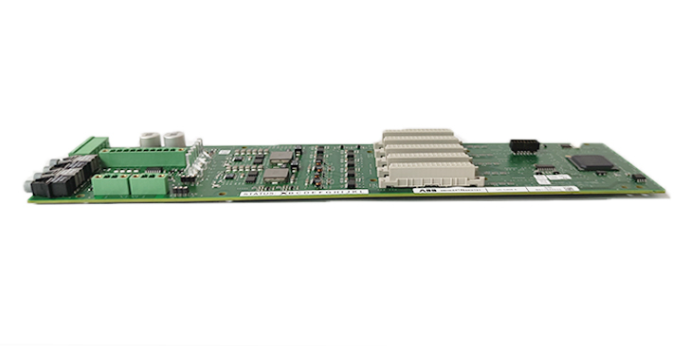ABB SNAT602 TAC TAC Interface Board is a specialized interface board designed for collaborative interconnection scenarios between industrial control systems. It belongs to the ABB Advant OCS or Symphony Plus control system supporting product line and is positioned as a "bridge for multi system signal interaction and protocol conversion". This interface board focuses on solving the signal compatibility and data exchange problems between different control subsystems (such as TAC building automation system and industrial DCS system) and devices. It integrates multi protocol conversion, signal isolation, and data preprocessing functions, adopts a high stability hardware architecture and anti-interference design, and can achieve bidirectional conversion between TAC protocol and industrial standard protocol in scenarios such as building intelligent control, industrial park comprehensive monitoring, and large-scale public facility automation. It provides reliable interface support for cross system collaborative control (such as building energy management and industrial production energy scheduling linkage), especially suitable for comprehensive automation projects that require multi system integration.
ABB UCD224A102 Control Module
Product core positioning
ABB UCD224A102 is a high-performance industrial control module that combines general control and specialized regulation capabilities. It is not only the core control unit of distributed control systems (DCS), but also a key component for specialized applications such as voltage regulation and excitation control. Its design focuses on "high precision+high reliability", meeting the stringent automation requirements of multiple industries through robust components and wide environmental adaptability, and is widely labeled as the benchmark product of ABB UCD series.
Key technical parameters
Power supply specifications
24VDC
24VDC, Power consumption 9W
Supplementary power consumption data for special scenarios
Environmental adaptability
Working temperature -40 ℃~+85 ℃, IP67
Working temperature -25 ℃~+60 ℃, IP20
It is speculated that there are differences in different protection versions
Channel configuration
16 channels for input/output each
32 channel 24V scanning input (Abstract 6)
The number of channels varies with the application scenario
Communication capability
Profibus, Modbus, Ethernet/IP
Added EtherCAT and 2 RS232 interfaces
High end model extension protocol support
Core hardware
32-bit RISC CPU, 8MB Flash+16MB RAM
Disclosure of processor details for specialized models
Physical specifications
150×100×50mm,1.5kg
263×138×88mm,2.35kg
Size and weight vary with functional integration
Core functions and competitive advantages
1. Multidimensional control capability
General control: supports 16 input/output signal processing, can connect temperature, pressure and other sensors with valves, motors and other actuators to achieve closed-loop control of the production line;
Special regulation: With precise control of DC current (± 0.1% accuracy), voltage regulation, and excitation system management functions, it can directly drive motors or stabilize generator magnetic fields;
Algorithm support: Built in advanced control algorithms, compatible with programming languages such as ladder diagrams and structured text, suitable for complex logic development.
2. Strong environmental adaptability
Extreme temperature tolerance: The mainstream version can operate stably from -40 ℃ (in cold regions) to+85 ℃ (in high-temperature workshops), far exceeding the industrial standard (-20 ℃~+60 ℃);
High protection level: IP67 version achieves dust and water resistance, and can be directly installed next to damp and dusty on-site equipment without the need for additional protective boxes.
3. Flexible system integration
Multi protocol compatibility: covering Profibus (device level communication), Modbus (universal protocol), Ethernet/IP (Ethernet communication), and can be connected to mainstream DCS systems such as ABB AC800M;
Convenient installation: Supports DIN rail or PCB board fixation, suitable for installation needs of distributed cabinets and compact devices.
Typical application scenarios
1. Core application areas
Energy and Electricity
Generator excitation control, grid voltage regulation
High precision signal processing, high reliability
Manufacturing industry
Production line automation, robot motion control
Multi channel input/output, fast response
Petrochemical industry
Temperature and pressure control of reaction kettle, regulation of pipeline valves
Extreme environmental tolerance, IP67 protection
Transportation and Communications
Rail transit signal control, charging pile power management
Wide temperature operation, protocol compatibility
2. Example of System Roles
In the DCS system of a large refinery, UCD224A102 plays a dual role: as an analog input module, it collects 16 temperature sensor signals and uploads them to the central controller through Modbus protocol; At the same time, as the execution control unit, adjust the opening of 8 valves based on feedback signals to control the reaction rate.

- User name Member Level Quantity Specification Purchase Date
- Satisfaction :
-









Email:wang@kongjiangauto.com




































































































































